To install a 5th wheel hitch, first, ensure your truck is compatible with the hitch’s weight capacity, then attach the hitch to the truck bed using the provided hardware.
Factors To Consider When Selecting A 5Th Wheel Hitch
Choosing the right 5th wheel hitch is crucial for a smooth and safe towing experience. With various options available in the market, it can be overwhelming to make the right choice. To simplify the process, there are three key factors you should consider: weight capacity, type of hitch, and compatibility with your towing vehicle.
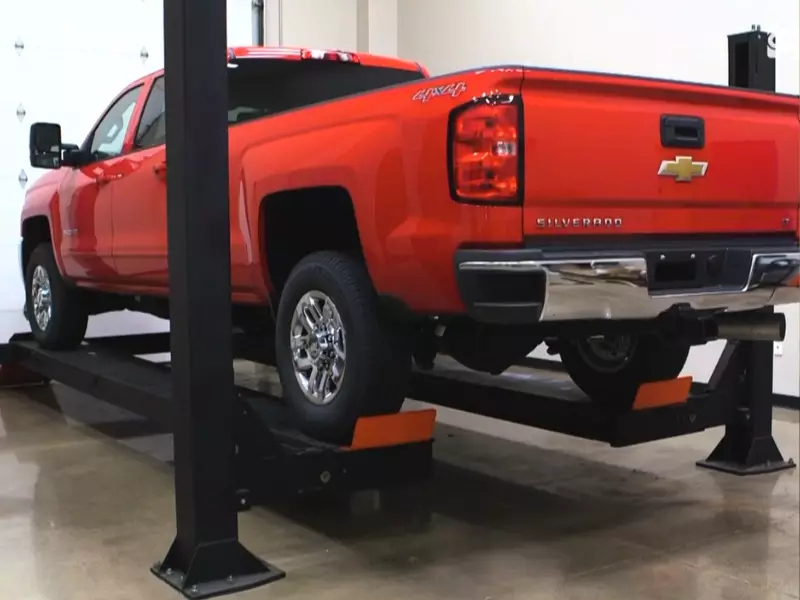
Weight Capacity
One of the most important factors to consider when selecting a 5th wheel hitch is its weight capacity. The weight capacity refers to the maximum amount of weight the hitch can safely handle. It is essential to choose a hitch that can support the weight of your trailer, considering both its loaded and unloaded weight. This will ensure stability and prevent any damage to your towing vehicle or the hitch itself.
Type of Hitch (Fixed, Sliding, or Gooseneck)
There are three main types of 5th wheel hitches: fixed, sliding, and gooseneck. Each type has its own advantages and considerations.
A fixed hitch is a popular choice for those who have a towing vehicle with a short bed. It provides stability and a straightforward towing experience. However, it may limit maneuverability in tight spaces.
A sliding hitch, on the other hand, is designed for towing with a short bed. It allows the trailer to slide back and forth, providing additional clearance and making it easier to navigate sharp turns. However, keep in mind that a sliding hitch adds complexity and may require manual operation.
The gooseneck hitch is a specialized type of hitch that mounts in the bed of the towing vehicle. It offers increased maneuverability and stability, making it suitable for heavy-duty towing. However, it requires specific equipment and modifications to your trailer.
Compatibility with Your Towing Vehicle
Before purchasing a 5th wheel hitch, it is crucial to ensure compatibility with your towing vehicle. Consider factors such as the bed length, towing capacity, and mounting options. Measure the distance between the truck cab and the trailer, known as the cab clearance, to ensure that there is enough space for turning without any collisions. Additionally, check if your towing vehicle requires any specific mounting brackets or adapters.
Take the time to research and consider these factors before making a decision. Remember that selecting the right 5th wheel hitch will provide a safer and more enjoyable towing experience, keeping you and your cargo secure on the road.
Researching And Comparing Different Hitch Options
When it comes to installing a 5th wheel hitch, it’s essential to choose the right one for your specific needs. With so many options available in the market, researching and comparing different hitch options is crucial. This will ensure that you make an informed decision and select a hitch that is not only suitable for your RV but also offers optimal performance and safety.
Reading reviews and customer feedback
One of the best ways to gain insight into the performance and quality of different 5th wheel hitches is by reading reviews and customer feedback. This allows you to understand the experiences of other RVers who have already used a particular hitch. Their feedback can provide valuable information about the ease of installation, durability, and overall satisfaction with the hitch. Moreover, it can help you identify any potential issues or drawbacks that may not be apparent from the manufacturer’s description alone.
Consulting with experts or experienced RVers
Another great way to gather information about different hitch options is to consult with experts or experienced RVers. They have firsthand knowledge and can offer valuable insights based on their own experiences. Whether it’s seeking recommendations from a specialized hitch retailer or joining online RV forums where experienced RVers share their expertise, reaching out to knowledgeable individuals can provide valuable guidance in selecting the right hitch for your specific needs.
Understanding the pros and cons of each hitch type
Understanding the pros and cons of each hitch type is essential to make an informed decision. Different hitch types, such as sliding hitches or gooseneck hitches, have their own advantages and disadvantages. Sliding hitches, for example, provide additional maneuverability in tight spaces but might be more complex to install and operate. On the other hand, gooseneck hitches offer a simpler installation process but are not as adjustable in terms of maneuverability. By carefully considering the pros and cons of each hitch type, you can ensure that you choose the one that best suits your towing needs.
To summarize, researching and comparing different hitch options is an important step in installing a 5th wheel hitch. Reading reviews and customer feedback, consulting with experts or experienced RVers, and understanding the pros and cons of each hitch type can guide you to make the right decision. By investing time in research, you can have confidence in your choice and enjoy a smooth towing experience with your RV.
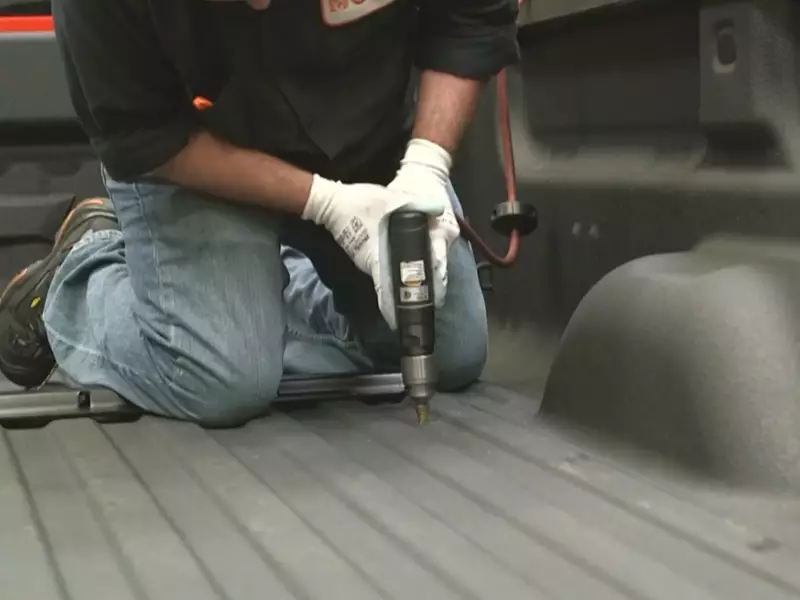
Gathering The Necessary Tools And Equipment
Before you start installing a 5th wheel hitch, it’s important to gather all the necessary tools and equipment to ensure a smooth and efficient installation process. Having the right tools on hand will save you time and frustration, allowing you to complete the installation with ease.
Wrenches, sockets, and screwdrivers
One of the essential tools you’ll need for installing a 5th wheel hitch is a set of wrenches, sockets, and screwdrivers. These tools will be necessary for tightening and loosening nuts, bolts, and screws during the installation process. Be sure to have a variety of sizes of wrenches and sockets to accommodate different bolt sizes.
Required tools:
1. Combination wrench set (with sizes ranging from XX to XX) 2. Socket set (with sizes ranging from XX to XX) 3. Screwdriver set (with both Phillips and flathead screwdrivers)
Use these tools to:
- Remove and tighten nuts and bolts - Loosen and tighten screws
Safety goggles and gloves
Your safety should always be a top priority when doing any type of installation work. When installing a 5th wheel hitch, it’s crucial to protect your hands and eyes from potential hazards. Safety goggles will shield your eyes from debris and small particles, while gloves will provide hand protection and enhance your grip on tools and heavy hitch components.
Required safety gear:
1. Safety goggles 2. Work gloves
Why you should use them:
- Protect your eyes from debris and particles - Safeguard your hands from cuts and bruises - Improve your grip on tools and hitch components
Leveling blocks or ramps
Having a level surface under your 5th wheel trailer is important for stability and proper weight distribution. Leveling blocks or ramps can be used to create a flat and even surface for the installation process. These items will come in handy when positioning and aligning the hitch components, ensuring a secure and balanced setup.
Required items:
1. Leveling blocks or ramps
Why you need them:
- Create a level surface for proper weight distribution - Position and align hitch components accurately - Ensure a secure and balanced setup
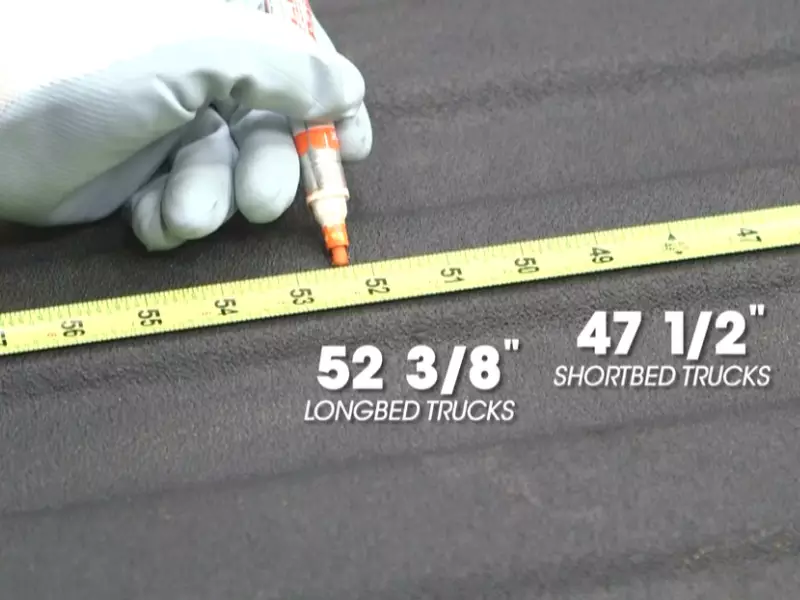
Understanding The Installation Process
Installing a 5th wheel hitch might seem daunting at first, but with the right guidance, it can be a relatively straightforward process. By understanding and following the installation steps, you can ensure a successful hitch installation that will allow you to tow your 5th wheel trailer with confidence.
Reviewing the manufacturer’s instructions
Before you begin, it’s important to thoroughly review the manufacturer’s instructions provided with your 5th wheel hitch. These instructions will provide specific details and guidelines for your particular hitch model, ensuring a proper and safe installation. Take the time to read through the instructions carefully, making note of any special tools or additional components that may be required.
Breaking down the installation into key steps
Breaking down the installation process into key steps can make it more manageable. Here’s a simplified overview of the basic installation steps:
Step 1: Prepare your vehicle
Start by preparing your vehicle for the hitch installation. This may involve removing any existing components that could interfere with the installation process.
Step 2: Position the hitch
Locate the designated mounting points on your vehicle and properly position the hitch. Ensure that the hitch is level and aligned with the vehicle’s frame or bed.
Step 3: Secure the hitch
Once the hitch is properly positioned, securely fasten it to the mounting points using the provided hardware. Tighten the bolts or screws according to the manufacturer’s specifications.
Step 4: Install the necessary components
Depending on your specific hitch model, there may be additional components that need to be installed, such as the kingpin and locking mechanism. Follow the manufacturer’s instructions to properly install these components.
Step 5: Test and adjust
After the hitch and its components have been installed, perform a thorough test to ensure everything is secure and functioning correctly. Make any necessary adjustments as needed.
Familiarizing yourself with the hitch components
Before starting the installation process, it’s essential to familiarize yourself with the various components of a 5th wheel hitch. This knowledge will help you identify each part and understand its role in the installation process. Common hitch components include:
- Hitch head
- Base rails
- Mounting brackets
- Kingpin
- Locking mechanism
- Hardware and fasteners
By knowing and recognizing these components, you can ensure they are properly installed and functioning correctly.
Preparing The Towing Vehicle And Trailer
Before you can install a 5th wheel hitch, it’s crucial to properly prepare both the towing vehicle and the trailer. This involves ensuring the towing vehicle is on a level surface, disconnecting and securing the trailer, and checking the trailer’s kingpin and coupler. By following these steps, you’ll be on your way to a safe and successful hitch installation. Let’s take a closer look at each one:
Ensuring the towing vehicle is on a level surface
To begin, make sure your towing vehicle is parked on a level surface. This is important not only for the ease of installation but also for the stability and safety of the hitch. If your vehicle is on an incline, it can affect the weight distribution and potentially lead to an unstable towing experience. Use a leveling tool or consult your vehicle’s owner’s manual to determine if it’s on a level ground. If needed, find a suitable location where the vehicle can be leveled before proceeding with the installation.
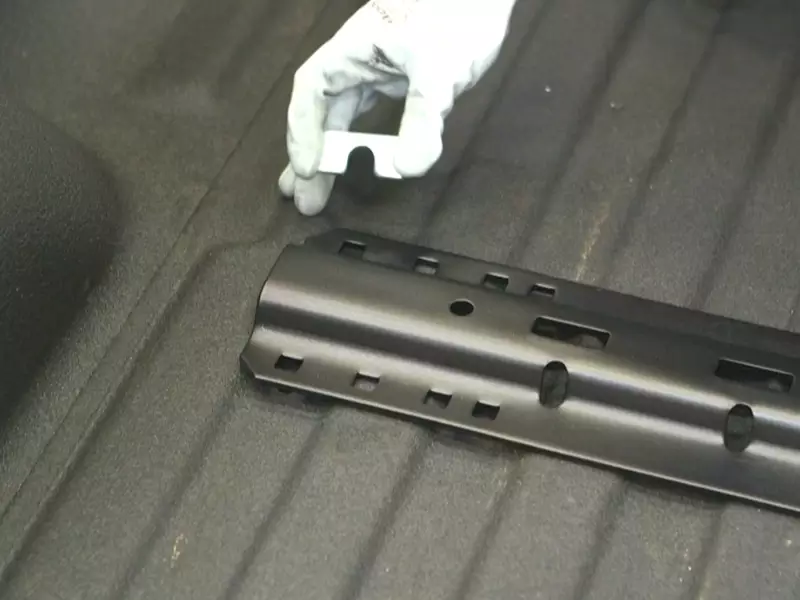
Disconnecting and securing the trailer
Before you start with the hitch installation, it’s necessary to disconnect and secure the trailer. This involves releasing the trailer’s safety chains, electrical connections, and breakaway cable from the towing vehicle. Ensure that the trailer is parked on a stable surface and use chocks to prevent it from rolling or shifting during the installation process. It’s also a good idea to engage the trailer’s parking brake for added security.
Checking the trailer’s kingpin and coupler
Next, take a moment to inspect the trailer’s kingpin and coupler. The kingpin is the part of the trailer that connects to the 5th wheel hitch. Ensure that it’s clean, free from any damage or debris, and properly lubricated.
The coupler, on the other hand, is the mechanism on the trailer that locks onto the towing vehicle’s hitch. Check that the coupler is in good condition, securely fastened, and functioning correctly. Any signs of wear or damage should be addressed before proceeding with the hitch installation.
By carefully preparing the towing vehicle and trailer, you’ve set the stage for a successful 5th-wheel hitch installation. With the towing vehicle on a level surface, the trailer securely disconnected and secured, and the kingpin and coupler thoroughly checked, you’re ready to move on to the next step. Stay tuned for the following section where we’ll guide you through the process of installing the 5th wheel hitch itself.
Mounting The Base Rails Or Hitch Rails
When it comes to installing a 5th wheel hitch, one of the essential steps is mounting the base rails or hitch rails onto the truck bed. These rails provide the foundation for your hitch and play a crucial role in ensuring the stability and proper functioning of your towing system. In this section, we will guide you through the process of determining the appropriate location for the rails, securing them to the truck bed, and checking for alignment and stability.
Determining the Appropriate Location for the Rails
To determine where exactly the base rails should be installed on your truck bed, there are several factors to consider. The first thing you need to determine is the optimal clearance between your truck cab and the trailer nose. This ensures that the trailer has enough room to turn without colliding with the truck. Additionally, you need to ensure the rails are positioned symmetrically and parallel to each other for optimal weight distribution and towing performance.
Securing the Rails to the Truck Bed
Once you have determined the appropriate location for the rails, it’s time to secure them to the truck bed. Most base rails come with pre-drilled holes, making the installation process easier. Begin by placing the rails in the desired position on the truck bed, ensuring they are aligned and centered according to your previous measurements. Use the provided hardware, typically bolts, washers, and nuts, to secure the rails tightly to the truck bed. Make sure to follow the manufacturer’s instructions for torque specifications to ensure proper installation.
Checking the Alignment and Stability of the Rails
After securing the rails, it’s vital to check their alignment and stability before proceeding further. Start by visually inspecting the rails to ensure they are parallel to each other and positioned correctly. Next, check for any unwanted movement or play by applying gentle pressure to the rails in different directions. If you detect any instability, you may need to tighten the bolts further or consult a professional for assistance. Remember, the rails’ stability is crucial for the safe and secure towing of your 5th wheel trailer.
By following these steps and taking the time to properly mount the base rails or hitch rails, you are ensuring a solid foundation for your 5th wheel hitch. This will not only enhance its performance but also provide you with a safe and enjoyable towing experience. Now that the rails are securely in place, you are one step closer to hitting the road with your 5th wheel trailer behind you.
Assembling And Installing The Hitch Head
Assembling and installing the hitch head is a crucial step in getting your 5th wheel hitch ready for towing. This process involves attaching the hitch head to the base rails, adjusting the height and angle of the hitch head, and ensuring a secure connection by tightening the bolts.
Attaching the hitch head to the base rails
The first step in assembling the hitch head is attaching it to the base rails. Follow these steps to ensure a proper connection:
- Position the hitch head over the base rails, aligning the pins on the hitch head with the holes on the rails.
- Insert the pins into the holes and ensure they are securely locked in place.
- Verify that the hitch head is centered and aligned with the base rails, making any necessary adjustments as needed.
Adjusting the height and angle of the hitch head
Properly adjusting the height and angle of the hitch head is essential for a smooth and safe towing experience. Here’s how you can do it:
- Use a jack to raise or lower the front of your trailer until it is level.
- Measure the height from the ground to the kingpin plate on the trailer.
- Adjust the hitch height by moving the hitch head up or down on the base rails to match the height of the kingpin plate.
- Angle the hitch head slightly downward, allowing for better weight distribution and reducing stress on the towing vehicle.
Tightening the bolts and ensuring a secure connection
Once the hitch head is attached and adjusted correctly, it’s crucial to ensure a secure connection by tightening the bolts. Follow these steps to complete the installation:
- Tighten the bolts on the hitch head using the appropriate size wrench or socket.
- Check for any play or movement in the hitch head and base rails, making adjustments if necessary.
- Recheck the tightness of the bolts after the first few trips to ensure a secure and reliable connection.
By following these steps, you can assemble and install the hitch head with ease, ensuring a safe and efficient towing experience for your 5th wheel trailer.

Installing The Kingpin Or Gooseneck Adapter
When it comes to installing a 5th wheel hitch, one crucial step is connecting the kingpin or gooseneck adapter to the trailer. This step ensures a secure attachment and allows for smooth and safe towing. In this guide, we will walk you through the process of installing the kingpin or gooseneck adapter, ensuring a proper fit and secure connection to your trailer.
Connecting the kingpin or gooseneck adapter to the trailer
The first step in installing a kingpin or gooseneck adapter is to properly connect it to the trailer. Follow these steps:
- Position the adapter just above the kingpin or gooseneck coupler on the trailer’s frame.
- Ensure that the adapter is aligned with the trailer’s hitch hole.
- Lower the trailer onto the adapter, making sure that the trailer’s hitch hole fits snugly onto the kingpin or gooseneck head of the adapter.
- Tighten the bolts or latches to securely attach the adapter to the trailer.
Ensuring a proper fit and secure attachment
Before hitting the road, it’s crucial to ensure a proper fit and secure attachment of the kingpin or gooseneck adapter. Here are a few things to keep in mind:
- Check that the adapter and trailer are aligned correctly and that the coupler fits securely onto the adapter’s head.
- Ensure that all bolts and latches are tightened properly to prevent any movement or shifting during towing.
- Inspect the connection for any signs of damage or wear. Replace any worn-out parts to ensure a secure attachment.
Testing the connection for stability and movement
Once the kingpin or gooseneck adapter is properly installed and securely attached, it’s essential to test the connection for stability and movement. Here’s how:
- Apply gentle pressure to the trailer to check for any excessive movement or play in the connection.
- Perform a visual inspection while someone else shakes the trailer. Look for any signs of loosening or shifting in the adapter or hitch components.
- If any instability is detected, recheck the bolts and latches for proper tightness. Make necessary adjustments to ensure a stable and secure connection.
By following these steps, you can ensure a proper installation of the kingpin or gooseneck adapter and have peace of mind while towing your 5th wheel trailer.
Conducting A Safety Check
After successfully installing your 5th wheel hitch, the next crucial step is to conduct a comprehensive safety check. This step is vital to ensure that all components are properly installed, the weight capacity is suitable for your towing needs, and the trailer’s connection and stability are ensured. By performing these essential checks, you can have peace of mind knowing that your hitch is secure and ready for the road ahead.
Confirming Proper Installation of All Components
First and foremost, it is crucial to confirm the proper installation of all the components involved in your 5th wheel hitch installation. This includes the hitch itself, rails, brackets, and any additional accessories. Start by visually inspecting each component, ensuring that they are securely fastened and in proper alignment.
Next, carefully examine the rails and brackets to ensure they are firmly attached to your vehicle’s frame. Check for any signs of wear or damage, such as loose bolts or cracks. If you notice any issues, it is essential to address them promptly by tightening bolts or replacing damaged parts.
Verifying the Hitch’s Weight Capacity
Verifying the weight capacity of your 5th wheel hitch is crucial to prevent overloading and ensure safe towing. Consult the manufacturer’s specifications or user manual to determine the maximum weight capacity of your particular hitch model. Cross-check this information with the weight of your trailer and cargo to ensure they are within the recommended limits.
Additionally, pay close attention to the tongue weight capacity. This refers to the downward force exerted by the trailer on the hitch. Ensure that the hitch can handle your trailer’s tongue weight to maintain proper balance and stability while towing.
Checking the Trailer’s Connection and Stability
Once you have confirmed the hitch’s proper installation and weight capacity, it’s time to check the connection and stability of your trailer. Start by visually inspecting the trailer’s coupling mechanism to ensure it is securely latched onto the hitch’s kingpin. Verify that the safety latch is engaged and that there is no unnecessary movement between the trailer and the hitch.
Next, check the trailer’s stability by walking around it and looking for any signs of sagging, leaning, or unbalanced weight distribution. Uneven weight distribution can lead to poor handling and increase the risk of accidents. If necessary, adjust the load distribution within the trailer, ensuring that it is evenly distributed across both axles.
Additionally, inspect the trailer’s lights and brakes to ensure they are in proper working order. Adequate lighting and braking systems are crucial for safe towing, especially during nighttime or adverse weather conditions.
By conducting a comprehensive safety check, including confirming the proper installation of all components, verifying the hitch’s weight capacity, and checking the trailer’s connection and stability, you can ensure a safe and worry-free towing experience. Remember, safety should always be the top priority when it comes to towing, and a thorough check will provide the peace of mind needed for a successful journey on the road.
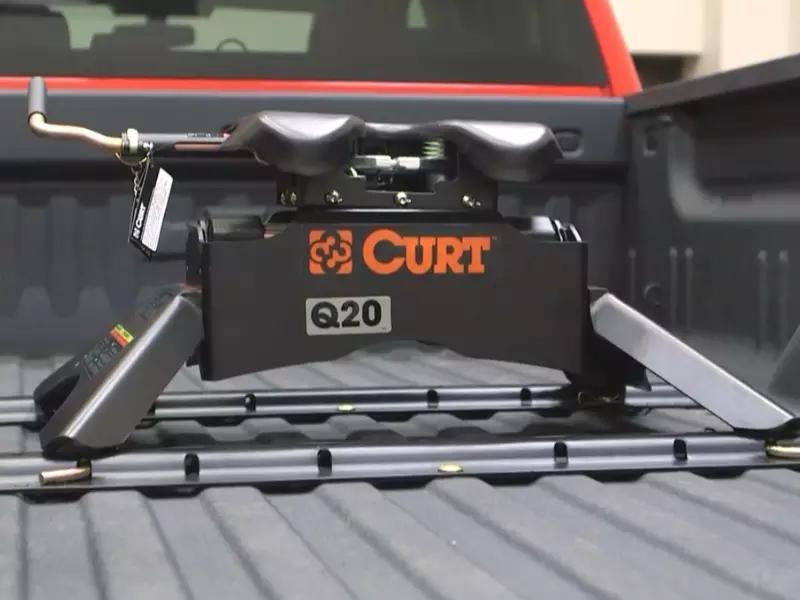
Adjusting The Hitch For Optimum Towing Experience
Adjusting the hitch for optimum towing experience is crucial to ensuring a smooth and safe journey when towing a 5th wheel trailer. When you install a 5th wheel hitch, it’s important to focus on certain aspects such as leveling the trailer and towing vehicle, ensuring proper weight distribution, and making any necessary adjustments to improve towing performance. Let’s explore each of these aspects in detail:
Leveling the trailer and towing vehicle
One of the first things you need to do when adjusting the hitch is to make sure both the trailer and towing vehicle are properly leveled. This is important for several reasons. A level trailer helps distribute the weight evenly, reducing strain on the tires and suspension. It also ensures better stability and control while towing. Follow these steps to level your trailer and towing vehicle:
- Park your towing vehicle and trailer on a flat surface.
- Measure the height difference between the front and rear of the towing vehicle.
- Adjust the hitch height using the hitch’s vertical adjustment feature.
- Check the level of the trailer using a spirit level or an app on your smartphone.
- If the trailer is not level, adjust the trailer’s leveling jacks or blocks to achieve proper leveling.
Ensuring proper weight distribution
Proper weight distribution is crucial for safe and efficient towing. When the weight is distributed evenly between the front and rear axles of both the towing vehicle and the trailer, it helps maintain stability and control. Here’s how you can ensure proper weight distribution:
- Weigh the towing vehicle and trailer to determine their loaded weights.
- Use a weight distribution hitch to transfer some of the trailer’s weight to the front axle of the towing vehicle.
- Adjust the tension on the weight distribution hitch to achieve the desired weight distribution.
- Check the weight distribution periodically during the towing journey and make adjustments if necessary.
Making any necessary adjustments to improve towing performance
Sometimes, even with proper leveling and weight distribution, you may need to make additional adjustments to improve your towing performance. These adjustments can include:
- Tweaking the hitch head angle to ensure the trailer is towing in a straight line.
- Adjusting the trailer brakes to synchronize with the towing vehicle’s braking system.
- Checking and adjusting tire pressures to ensure even wear and optimal handling.
- Inspecting and lubricating all moving parts of the hitch to reduce friction and improve performance.
By following these steps and making the necessary adjustments, you can optimize your 5th wheel hitch for an optimum towing experience. Remember to always consult your hitch’s user manual for specific instructions and guidelines. Safe travels!
On-Road Testing And Troubleshooting
Once you have successfully installed your 5th wheel hitch, it’s time to take it for a spin and test its functionality on the road. This crucial step allows you to ensure that everything is in working order and address any issues that may arise. By conducting on-road testing and troubleshooting, you can have peace of mind knowing that your hitch is safe and secure for your future towing adventures.
Taking a short drive to test the hitch’s functionality
The first step in on-road testing is taking a short drive to evaluate the functionality of your newly installed 5th wheel hitch. Find a clear, open road where you can safely maneuver your vehicle and trailer. Begin by driving in a straight line, gradually increasing your speed to assess if the hitch is securely attached and properly aligned.
During this initial test, pay close attention to any unusual noise, movement, or handling issues. These can be early indications of problems that need to be addressed. If you notice anything out of the ordinary, it’s important to stop and investigate before continuing your journey.
Observing any abnormal noise, movement, or handling issues
While on your test drive, carefully observe the performance of your 5th wheel hitch. Listen for any abnormal noise, such as clanking or squealing, which could indicate loose or poorly lubricated components. Additionally, be alert for any unusual movement or swaying of the trailer, as this may suggest an imbalance or improper weight distribution.
Don’t forget to focus on handling as well. If your vehicle feels difficult to steer or experiences excessive body roll, it could be a sign of an issue with the hitch or trailer. Remember, smooth and controlled handling is essential for safe towing.
Addressing and troubleshooting any problems that arise
If you encounter any problems during your on-road test, it’s essential to address and troubleshoot them promptly. Ignoring issues can lead to further damage or even accidents down the road. Invest sufficient time to determine the root cause of the problem before deciding on the appropriate course of action.
Consult the user manual for your specific 5th wheel hitch or seek advice from a professional if you’re unsure how to proceed. It’s better to be safe than sorry, and expert guidance can help you address any challenges effectively.
Once you’ve identified the problem, take the necessary steps to troubleshoot and resolve it. This might involve making adjustments to the hitch’s alignment, tightening loose bolts, lubricating moving parts, or redistributing the weight on the trailer. Remember to document any changes you make for future reference.
By diligently addressing and troubleshooting any problems that arise during your on-road testing, you can ensure that your 5th wheel hitch is in optimal working condition. This way, you’ll have peace of mind knowing that you’re ready to embark on your next towing adventure with confidence and safety.
Frequently Asked Questions Of How To Install 5Th Wheel Hitch
What Is The Easiest Fifth Wheel Hitch To Install?
The B&W Companion fifth wheel hitch is widely regarded as the easiest to install due to its simple design and user-friendly installation process. It provides a secure and stable connection for your trailer, making towing a breeze.
How Do You Attach A Fifth Wheel To A Hitch?
To attach a fifth wheel to a hitch, follow these simple steps:
- Align the trailer kingpin with the hitch on the truck.
- Lower the hitch onto the kingpin and lock it in place.
- Connect the safety chains and electrical connections.
- Raise the landing gear and secure it.
- Double-check the hitch connection before towing.
Can You Pull A 5Th Wheel With A 6.5 Ft Box?
Yes, you can pull a 5th wheel with a 6. 5 ft box. However, it’s important to ensure that your towing vehicle and 5th wheel are properly matched and within the weight limits. Additionally, consider the turning radius and maneuverability of your setup to prevent any potential clearance issues.
Does A 5Th Wheel Hitch Attach To The Frame?
Yes, a 5th wheel hitch does attach to the frame of a vehicle.
Conclusion
To successfully install a 5th wheel hitch, follow our step-by-step guide and ensure a secure towing experience. By understanding the necessary tools and procedures, you can confidently complete the installation without any hassle. Remember to regularly inspect and maintain your hitch for optimal performance and safety.
Now, you’re ready to hit the road and enjoy your adventures with peace of mind. Happy towing!
